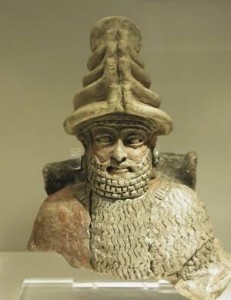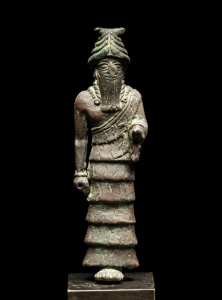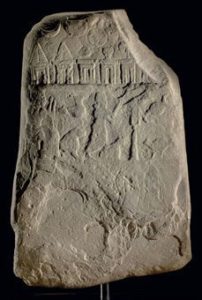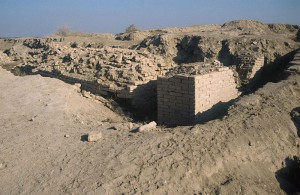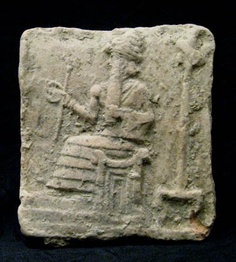Records of the Past, 2nd Series, Vol. IV , ed. by A.H. Sayce, [1890], at sacred-texts.com
(Texts: All Artifacts, Color Coding, & Writings in Bold Type With Italics Inside Parenthesis, are Added by Editor R. Brown, not the Authors, Translators, or Publishers!)
(gods in blue …mixed-breed demigods in teal…)
Obverse
COLUMN I.—The Commencement is destroyed
1. Kara-indas king of Kar-Du[nias]
2. and Assur-bil-nisi-su king of Assyria a covenant
3. between them with one another established;
4. and they gave an oath of their own accord 1 to one another in regard to the boundaries.
____________
5. Buzur-Assur king of Assyria and Burna-buryas
6. king of Kar-Dunias had a conference, and a definite
7. boundary they fixed of their own accord.
____________
8. In the time of Assur-yuballidh king of Assyria, Kara-Murudas
9. king of Kar-Dunias the son of Muballidhat-Serua
10. the daughter of Assur-yuballidh, soldiers of the Kassi 2
11. revolted against and slew him. Nazi-bugas
12. [a man of] low parentage they raised to the kingdom to be over them.
____________
13. [Bel-nirari to] exact vengeance
14. [for Kara-]Murudas 1 [his nephew] marched to Kar-Duniyas.
15. [Nazi-]bugas king of Kar-Du[ni]as he slew;
16. [Kuri-]galzu the second, the son of Burna-buryas,
17. he appointed to the kingdom; on the throne of [his] father [he seated him].
____________
18. In the time of Bel-nirari king of Assyria Kuri-galzu the second 2 [king of Kar- Dunias]
19. with Bel-nirari king of Assyria in the city of ’Sugagi which is upon the [Tigris]
20. fought. He utterly defeated him. His soldiers [he slew].
21. His camp he spoiled. From the ascent (?) to the land of Subari 3
22. as far as the land of Kar-Dunias they neutralized 4 the country and fixed (it);
23. a definite boundary they established.
____________
24. Rimmon-nirari king of Assyria 5 (and) Nazi-Murudas king of Kar-Dunias
25. fought with one another in the city of Kar-Istar-Agar’sallu. 6
26. Rimmon-nirari utterly overthrew Nazi-Murudas.
27. He shattered his forces; 7 his camp (and) his tutelary gods 8 he took from him.
28. In regard to a definite boundary, willingly (?) 1
29. their boundaries from the direction of the country of Pilasqi
30. on the farther 2 banks of the Tigris (and) the city of Arman-[Agar]’sali
31. as far as (the country) of Lulume they established and fixed.
____________
COLUMN II
Lacuna.
1. his servants he made
2. as far as the city of Kullar …
____________
3. Bel-kudur-utsur king of Assyria Uras-[pileser] 3
4. had slain. Bel-kudur-utsur did Rimmon-[suma-natsir 4 king of Kar-Dunias avenge].
5. With combat (and) slaughter thereupon Uras-pileser [was defeated, and]
6. to his country returned. His many soldiers [did Rimmon-suma-natsir collect, and]
7. marched to the city of Assur to capture (it).
8. In the midst of it he fought. He turned about and [returned to his own land].
____________
9. In the time of Zamama-suma-iddin 5 king of [Kar-Dunias]
10. Assur-danan 6 king of Assyria [marched] against Kar-Du[nias].
11. The cities of Zaban, Irriya (and) Agar’sal [he captured].
12. [Their spoil] in abundance [he carried away] to Assyria. 1
____________
Lacuna.
1. … to his own country [Assur-ris-ilim] 2 returned. After him Nebo-[kudur-utsur king of Kar-Dunias]
2. carried his war-engines. To the passes on the frontier of the land of [Assyria]
3. to conquer he went. Assur-ris-ilim king of Assyria
4. mustered his chariots to march against him.
5. Nebo-kudur-utsur, because his engines could not advance, burned his baggage 3 with fire;
6. he turned about and returned to his own country.
7. Nebo-kudur-utsur again (with) a chariot and grooms to the edge of the frontier
8. of Assyria marched to conquer. Assur-ris-ilim
9. sent chariots (and) grooms for defense. 4
10. He fought with him; he utterly overthrew him; his soldiers he slew;
11. his camp he spoiled, after they had brought back forty of his chariots (with their) coverings.
12. They had taken a standard 5 which went before his host.
____________
13. Tiglath-pileser 6 king of Assyria smote Merodach-nadin-akhi king of Kar- Dunias
14. a second time (with) a squadron of chariots, as many as over against the city of Zaban
15. (on) the Lower (Zab) in the direction of the city of Arzukhina he made,
16. in the second year, on the shore of the sea which is above the land of Accad.
17. The cities of Dur-Kurigalzu, 1 Sippara (Sippar) of Samas (Utu),
18. Sippara of Anunit (Inanna), 2
19. Babylon (and) Upe, 3 great strongholds,
20. together with their fortresses, he captured.
21. At that time the city of Agar’sal
22. together with the city of Lubdi he devastated. 4
23. The country of the Shuhites 5 as far as the city of Rapiqi, throughout its whole extent, [he conquered].
____________
24. In the time of Assur-bil-kala 6 king [of Assyria, he and]
25. Merodach-sapik-kullat king of Kar-Du[nias],
26. friendship 7 (and) complete alliance
27. with one another made.
28. In the time of Assur-bil-kala king of [Assyria]
29. Merodach-sapik-kullat was over[come] by death.
30. Rimmon-bal-iddina the son 8 of Ê-Saggil-saduni the son of a plebeian
31. they raised to the sovereignty over them.
32. [Assur-]bil-kala king of Assyria
33. took (to wife) the daughter of Rimmon-bal-iddina king of Kar-Dunias.
34. Her large dowry he brought to Assyria.
35. The men of Assyria (and) of Kar-Dunias
36. [lived at peace] with one another.
Reverse
COLUMN III
1. In the time of Rimmon-nirari 1 king of Assyria, (he and)
2. Samas-suma-damiq king of Kar-Dunias
3. set their forces in battle array at the foot of mount Yalman.
4. Rimmon-nirari king of Assyria overthrew Samas-suma-damiq
5. king of Kar-Dunias utterly.
6. He shattered his forces: 2 [his] chariots [and horses harnessed]
7. to the yoke [he carried away].
8. Samas-suma-damiq king of [Kar-Dunias]
9. did Nebo-suma-iskun [slay].
10. Rimmon-nirari king [of Assyria with] Nebo-suma-iskun
11. king [of Kar-Dunias] fought; he utterly overthrew him.
12. [The cities of] Bambala (and) Khuda[du] 3
13. [and] many [other] cities
14. [he captured, and] their abundant spoil
15. he took [to Assyria].
16. … tsalmati was overcome by death.
17. … concerning their daughter(s) they [spoke] to one another.
18. [Friendship and] complete alliance they [made] with one another.
19. The men of Assyria (and) Accad 4 were united 5 with one another.
20. From the Tel 6 of Bit-Bari which is above the city of Za[ban]
21. as far as the Tel of Batani 7 and (the Tel) of the city of Zabdani they fixed the boundary-line.
____________
22. [In the] time of Shalmaneser 1 king of [Assyria]
23. [and Nebo-]bal-iddina king of Kar-Duni[as]
24. friendship (and) complete alliance
25. [with] one another they made. In the time of Shalmaneser king [of Assyria]
26. [Nebo-]bal-iddina king of Kar-Dunias was [overcome] by death.
27. Merodach-nadin-sumi sat on the throne of his father.
28. Merodach-bil-u’sate his brother revolted against him.
29. He seized [the city] of [Ah]daban. The country of Accad
30. was disturbed [everywhere]. Shalmaneser king of [Assyria]
31. to the help of Merodach-nadin-[sumi]
32. king of Kar-Dunias marched.
33. Merodach-bil-u’sate the king he smote. 2
34. The rebel soldiers who (were) with him he slew.
35. [In] Kutha, 3 Babylon,
36. [and Borsippa 4 he offered sacrifice]. 5
Lacuna.
COLUMN IV
1. He besieged him. That city he took. Bahu-akha-iddin 6
2. together with his goods (and) the treasures of his palace he took to Assyria.
3. The cities of Dur-ili, 7 Sukhiru, 8 Gananate,
4. Dur-kissat-Papsukal, 1 the house of the harem, (and) the city of the waters of the Dhurnat,
5. the numerous cities of Kar-Dunias,
6. together with their fortresses, their gods (and) their abundant spoil,
7. the Great god, the god Khumkhummu, the goddess of Babylon, the goddess of Accad,
8. the god Simaliya, the god Nergal, the goddess Anunit (Inanna), (and) the divine Son of the Temple
9. of the city of Mali he brought away. To the cities of Kutha, Babylon,
10. (and) Borsippa he went up. Holy sacrifices [in them] he offered.
11. To the Kaldi 2 he descended. The tribute of the kings
12. of the land of the Kaldi I received. 3 His officers
13. div[ided] the fields of Kar-Duni[as].
14. A definite boundary he fixed.
____________
15. Rimmon-nirari 4 king of Assyria … [the king of Kar-Dunias]
16. subdued. 5 Many soldiers
17. in …
18. and …
19. men (and) spoil to his place he [brought back].
20. The perpetual obligation of a corn-tax (?) he imposed upon them.
21. The men of Assyria (and) Kar-Dunias [were united] with one another.
22. A common boundary in perpetuity they established.
23. The future prince who [shall rule] in Accad
24. shall observe it, and [the record] of power (and) conquest
25. may he write, and to this monument [may he hearken]
26. perpetually, and that it may not be forgotten may he [who]
27. has possessed the people listen, and …
28. may they exalt the power of Assyria unto [future] days.
29. May he who shall give laws (?) to Sumer (and) Accad [its words]
30. interpret to all the world.
____________
31. [The property of Assur-bani-pal] king of Assyria.
Footnotes
27:1 The word has nothing to do with the pronoun annu as is supposed in Schrader’s Keilinschriftliche Bibliothek.
27:2 The Kassi or Kossæans were mountaineers who lived in Elam on the eastern side of Babylonia. They conquered Babylonia and there founded a dynasty to which Kara-Murudas belonged.
28:1 The text has -indas, but this is evidently an error of the scribe. Bel-nirari was the son of Assur-yuballidh and the great-grandfather of Shalmaneser I., who, we learn from an inscription of Sennacherib, was reigning about 1300 B.C.
28:2 Or perhaps “the child.” There seem to have been three kings of the name of Kuri-galzu.
28:3 This can hardly be the Subari or Subarti of the historical texts, which lay in the far north in the neighbourhood of Diarbekir. See vol. i. p. 99, note 1.
28:4 Literally “caused to be alike” to both.
28:5 Rimmon-nirari I. was the grandson of Bel-nirari and the father of Shalmaneser I. We possess an inscription of his, of which a translation has been given in the first series of the Records of the Past, vol. xi. pp. 1–6.
28:6 Agar’sallu is a man’s name. The name of the city signifies “Fort of Istar of Agar’sal.”
28:7 Silim not abikta.
28:8 Literally “divine elder brothers.” The “reed of the divine elder brothers” is mentioned in 1266, 5.
29:1 Annime.
29:2 The scribe has written ammamate in mistake for ammate.
29:3 It is to Uras-pileser that Tiglath-pileser I. traces his genealogy. He was probably the founder of a dynasty, and his date may perhaps be placed about 1180 B.C.
29:4 For Rimmon-suma-natsir see Records of the Past, new series, p. 16, No. 24.
29:5 Or Zamama-nadin-sumi, see vol. i. p. 16, note 5.
29:6 We should probably read Assur-da’an, since the chronological position occupied by the king shows that he must be Assur-da’an the son of Uras-pileser and great-grandfather of Tiglath-pileser I.
30:1 These twelve lines come from a fragment belonging to a duplicate copy of the text.
30:2 The father of Tiglath-pileser I.
30:3 Or “ringed encampment.”
30:4 Literally “aid.”
30:5 Not a proper name Karastu.
30:6 Tiglath-pileser I. According to Sennacherib Merodach-nadin-akhi invaded Assyria in the reign of Tiglath-pileser, 418 years before his own capture of Babylon, and consequently 1106 B.C. If the war between Assyria and Babylonia had been provoked by this invasion the accession of Tiglath-pileser would fall 1107 B.C.
31:1 Now Akerkuf near Bagdad.
31:2 Sippara was divided into two quarters, one dedicated to the goddess Anunit, the other (now represented by the mounds of Abu-Habba) to Samas the Sun-god. The double nature of the city has caused it to be called in scripture Sepharvaim “the two Sipparas” (2 Kings xvii. 35).
31:3 Upe was at the junction of the Tigris and the Adhem, and was known to classical geographers as Opis.
31:4 Ikh[lig].
31:5 The Shuhite tribes to which Bildad the friend of Job belonged extended along the western side of the Euphrates northward to the mouth of the Khabour.
31:6 Assur-bil-kala was the son of Tiglath-pileser I.
31:7 Literally “goodness.”
31:8 The word abil is not omitted in the original as is stated by Prof. Tiele.
32:1 Rimmon-nirari II, who reigned 911–889 B.C.
32:2 Silim not abiktu.
32:3 Or Bagdadu.
32:4 Northern Babylonia.
32:5 Ibba[nû].
32:6 Or “mound.”
32:7 The name of a man.
33:1 Shalmaneser II, who reigned 858–823 B.C.
33:2 Or “the king self-appointed along with the rebel soldiers,” if we read im-[gi-da] with Drs. Peiser and Winckler.
33:3 Now Tel Ibrahim a little to the east of Babylon. It is called Cuth in the Old Testament (2 Kings xvii. 30).
33:4 Borsippa was the suburb of Babylon which contained the great temple whose ruins are now known as the Birs-i-Nimrud.
33:5 This is supplied from an inscription of Shalmaneser.
33:6 Bahu-akha-iddin must have been the name of a Babylonian king.
33:7 Dur-ili (“the fortress of the god”) was in southern Babylonia, near the Elamite frontier.
33:8 Or Lakhiru.
34:1 Or Dur-Papsukal, “the fortress of the god Papsukal.” The city stood on an island in the Tigris, and was probably not far from Gananate on the southern side of the Dhurnat or Diyaleh (the Tornadotos of classical antiquity).
34:2 The Kaldi inhabited the marshes at the mouths of the Euphrates and Tigris. Under Merodach-baladan they established themselves in Babylonia and became so important a part of the population as to give their name to the whole of it in classical times. Hence the Kasdim of the Old Testament are represented by “Chaldæans” in the Authorised Version.
34:3 This is evidently a quotation from the royal annals.
34:4 Rimmon-nirari III, who reigned 850–781 B.C.
34:5 Ik-nu-us.
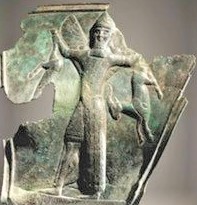
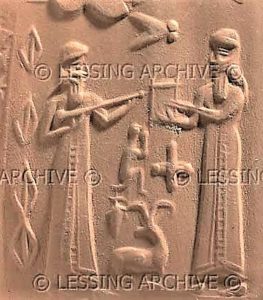
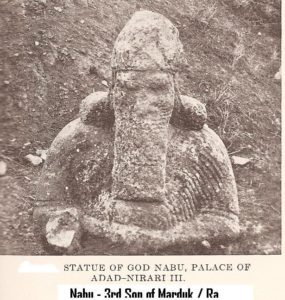
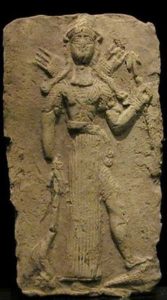
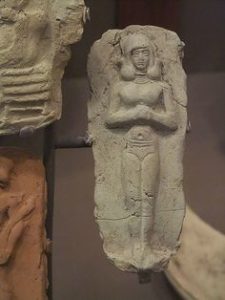
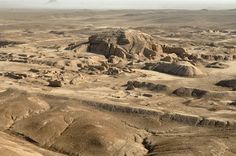
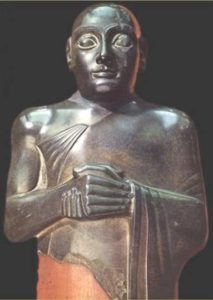
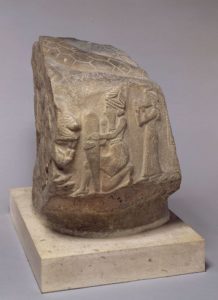
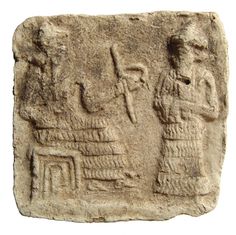
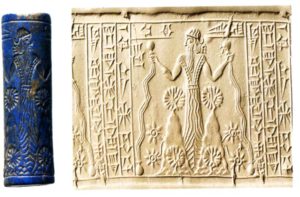
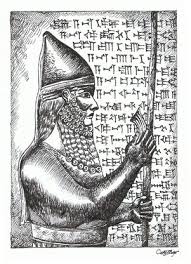
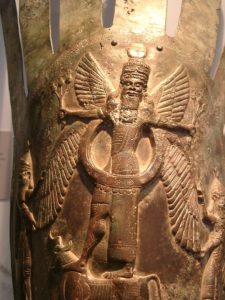
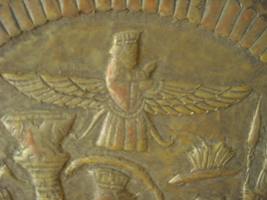
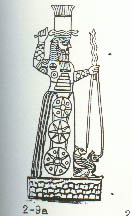
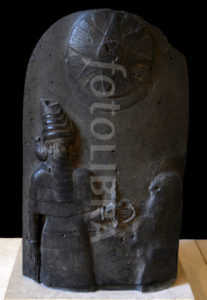
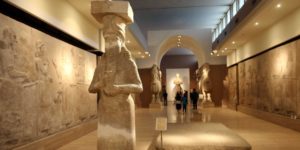
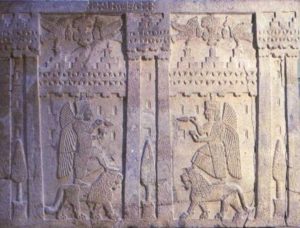
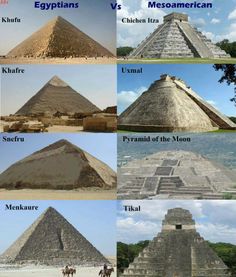
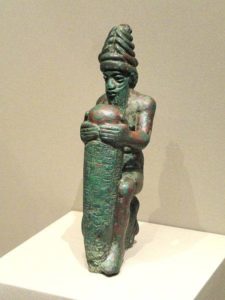
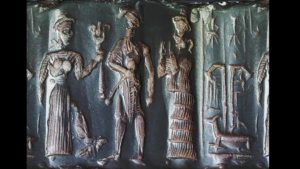
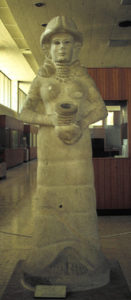
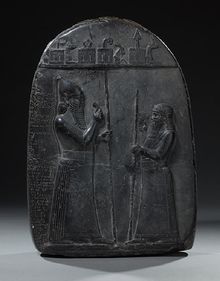
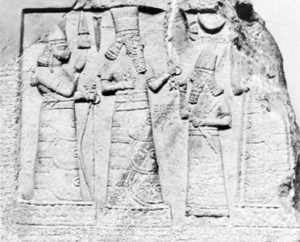
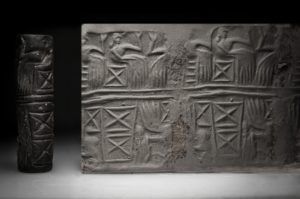
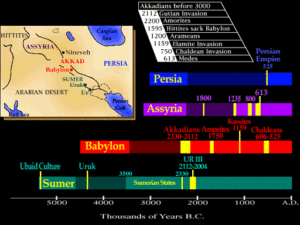
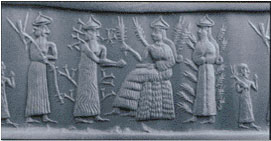
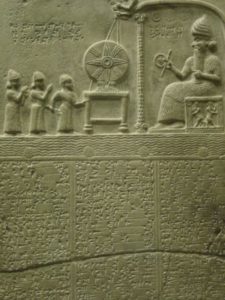
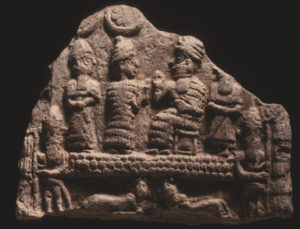
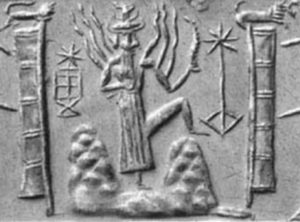
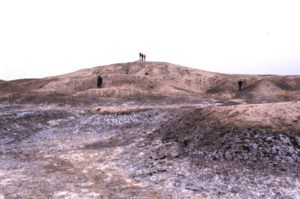
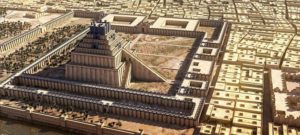
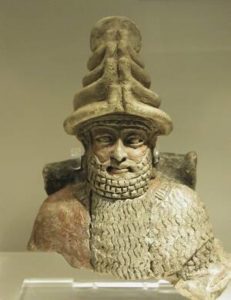
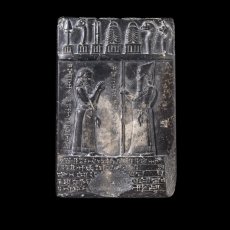
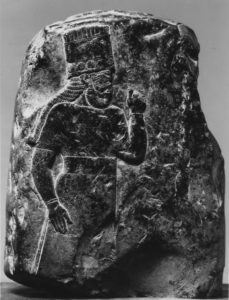
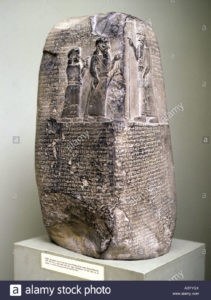
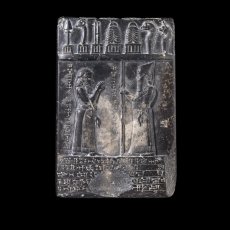
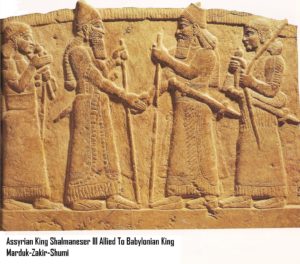
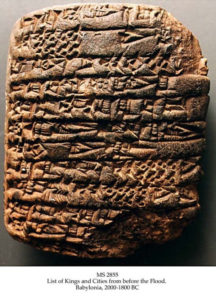
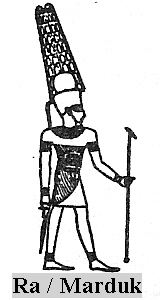

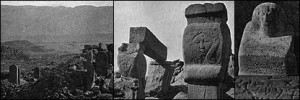
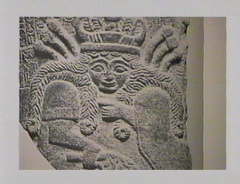
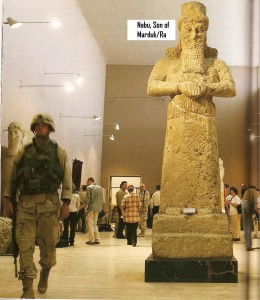
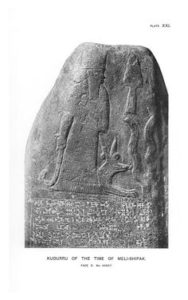
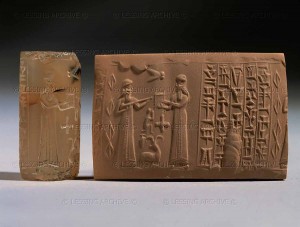
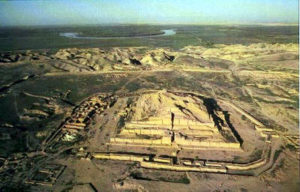
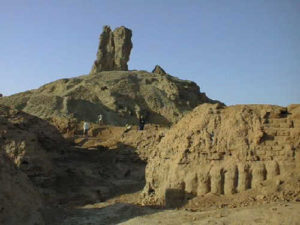
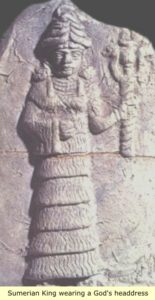
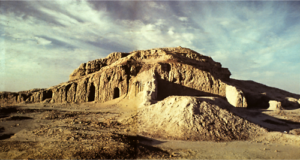
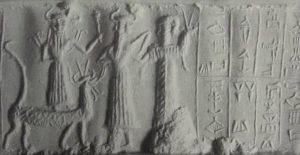
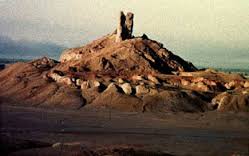
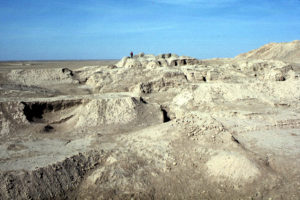 (
(